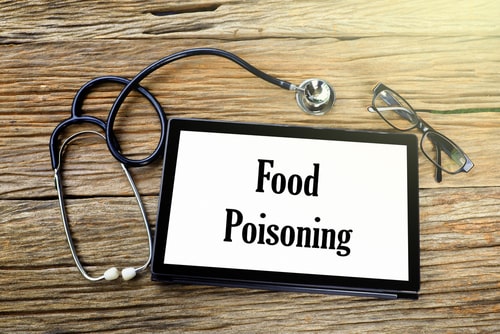Food contamination and food poisoning are related but distinct terms that are often used in discussions about food safety and public health. Understanding the differences between them is crucial for maintaining a safe and healthy food supply, preventing illnesses, and implementing appropriate public health measures.
Food Contamination
Food contamination refers to the presence of harmful substances or foreign materials in food that can potentially cause harm to consumers. Contaminants can be biological, chemical, or physical in nature and can enter the food supply at various stages, including production, processing, transportation, storage, and preparation. Contaminated food may or may not cause immediate illness, but it poses a risk to human health.
- Biological contamination – This includes bacteria, viruses, parasites, and fungi that can contaminate food and cause illnesses. Common examples are Salmonella, E. coli, norovirus, and Listeria.
- Chemical contamination – Chemicals can contaminate food through pesticides, cleaning agents, additives, preservatives, heavy metals, or naturally occurring toxins. Improper use of chemicals in agriculture, mishandling during food processing, or improper storage can lead to chemical contamination.
- Physical Contamination – This involves foreign objects entering the food, such as glass, metal fragments, hair, or plastic. These foreign bodies can accidentally contaminate food during production, packaging, or handling.
Preventing food contamination involves good hygiene practices, proper handling, storage, and cooking of food, adherence to food safety regulations, and regular monitoring and testing for contaminants.
Food Poisoning
Food poisoning, on the other hand, refers to illnesses or diseases caused by consuming contaminated food. It is the result of ingesting harmful substances or infectious agents present in the contaminated food. Food poisoning often leads to symptoms such as nausea, vomiting, diarrhea, abdominal pain, fever, and muscle aches. The severity and duration of symptoms can vary based on the type of contaminant and the individual’s health status.
- Bacterial food poisoning – This is the most common type and is caused by consuming food contaminated with harmful bacteria such as Salmonella, Campylobacter, E. coli, or Listeria.
- Viral food poisoning – Viruses like norovirus, rotavirus, and hepatitis A can contaminate food and cause food poisoning.
- Parasitic food poisoning – Parasites like Giardia, Cryptosporidium, and Toxoplasma can contaminate food and lead to foodborne illnesses.
Food poisoning can occur from consuming contaminated food at home, in restaurants, during travel, or at events. Prevention involves proper food handling and preparation, maintaining food at appropriate temperatures, practicing good personal hygiene, and ensuring the safety of the water and ingredients used in cooking.
Key Differences
Nature:
Food contamination refers to the presence of harmful substances or foreign materials in food.
Food poisoning is an illness or disease resulting from consuming contaminated food.
Cause:
Food contamination is caused by biological, chemical, or physical contaminants entering the food supply.
Food poisoning is caused by ingesting these contaminants, resulting in symptoms of illness.
Outcome:
Food contamination is a potential risk that may or may not result in immediate illness.
Food poisoning is an actual illness or health condition that occurs after consuming contaminated food.
Understanding these differences is vital for ensuring food safety, minimizing health risks, and establishing appropriate measures to prevent both food contamination and food poisoning. Implementing strict food safety protocols and educating the public on safe food handling practices can significantly reduce the incidence of foodborne illnesses.
